A "Substitution" is when a chord replaces or is used in addition to an existing chord. Chords can have an active or passive quality to them. Active chords tend to be restless and want to move on to other chords. Passive chords tend to offer a feeling of rest and resolution. This cycle of active and passive chords are what gives chord progressions their feeling of movement.
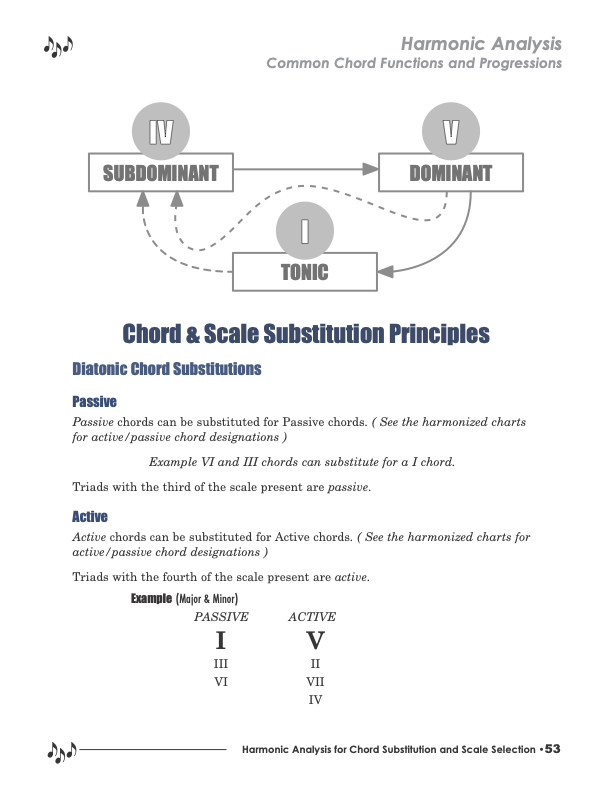
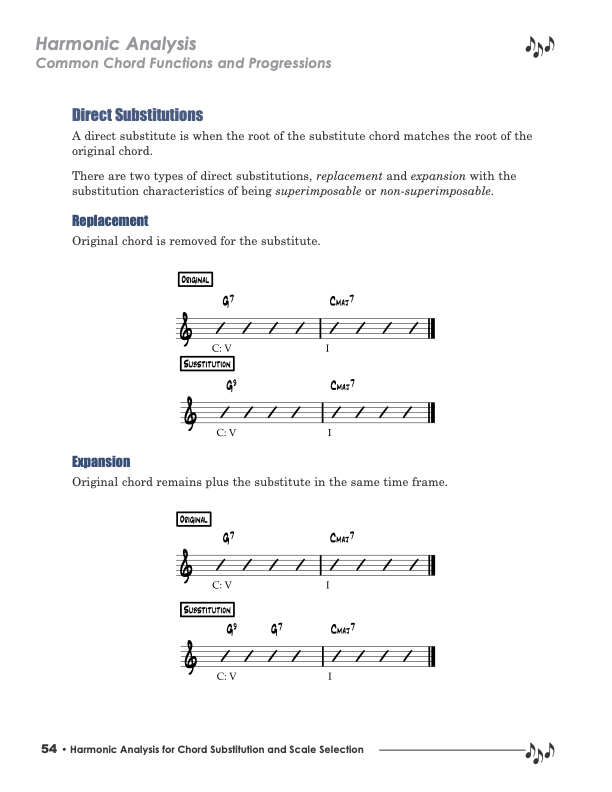
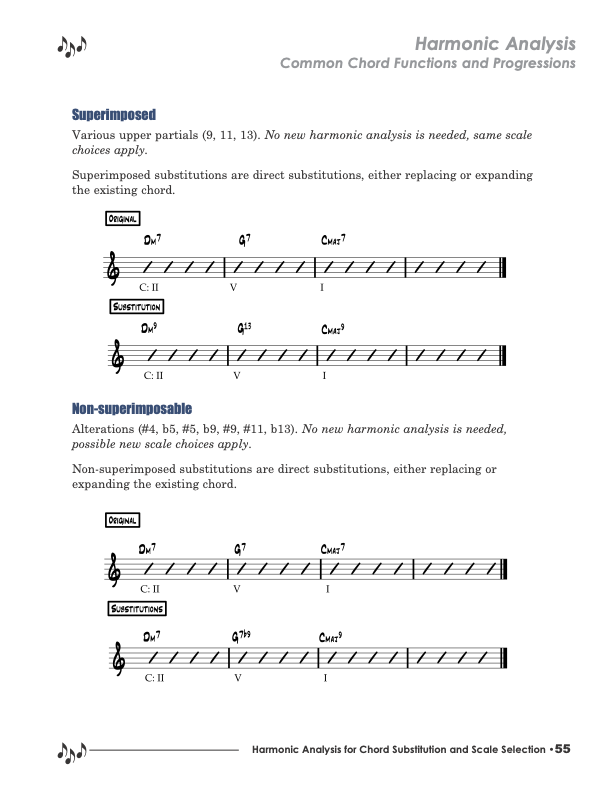
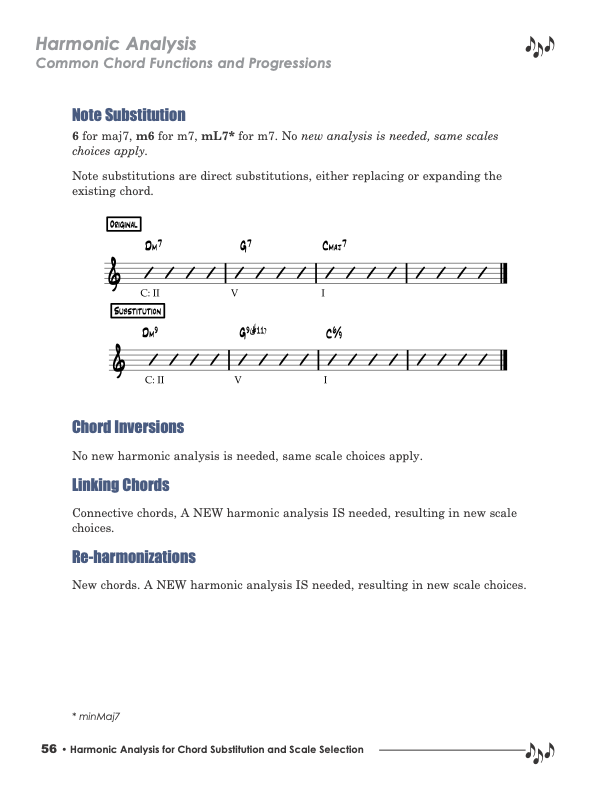
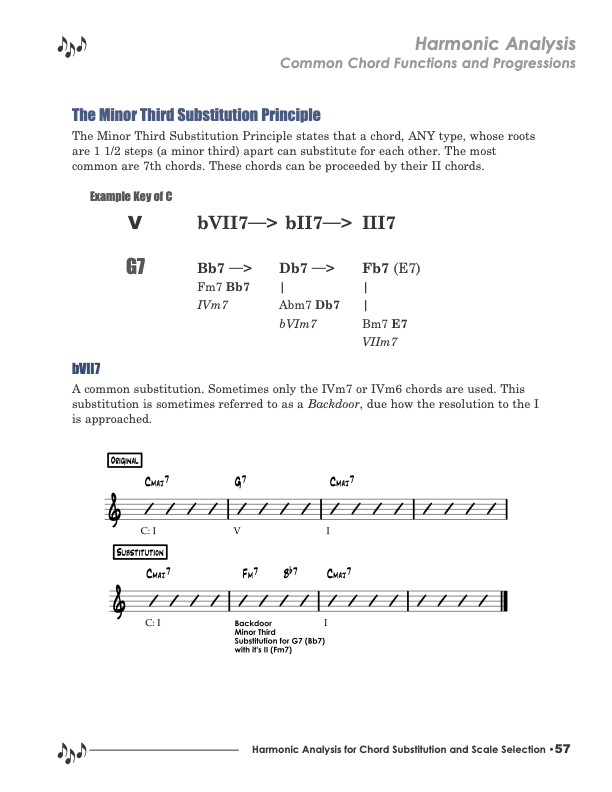
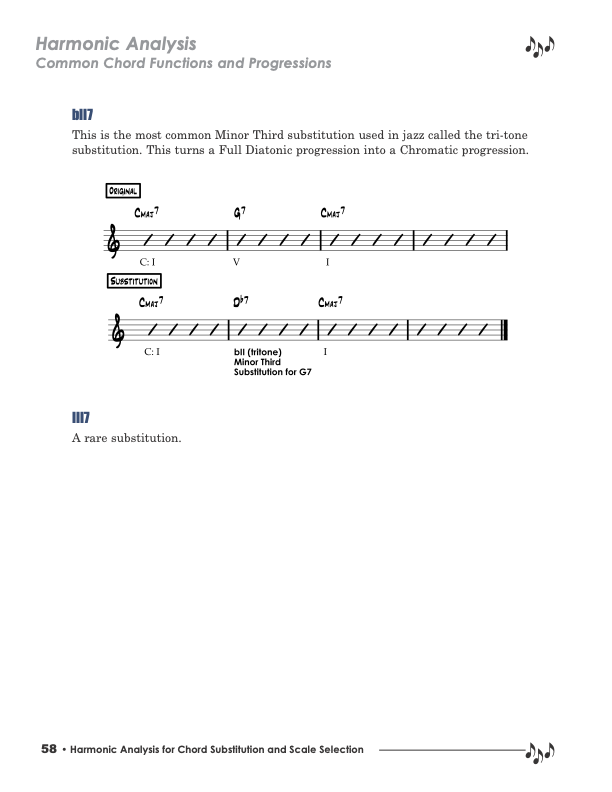






A Substitution is when a chord replaces or is used in addition to an existing chord.
Available for Premium Site Access Plans Only
Chords can have a active or passive quality to them. Active chords tend to be restless and want to move on to other chords. Passive chords tend to offer a feeling of rest and resolution. This cycle of active and passive chords are what gives chord progressions their feeling of movement.

This series, is the book Harmonic Analysis for Chord Substitution and Scale Selection by Curt sheller broken out into individual lessons with additional examples and content. Always, the latest version of the book.
Diatonic Chord Substitutions
Passive
Passive chords can be substituted for Passive chords.
Triads with the third of the scale present are passive.
Passive chords can be substituted for Passive chords. ( See the harmonized charts for active/passive chord designations )
Example: VI and III chords can substitute for a I chord.
Active
Active chords can be substituted for Active chords.
Triads with the fourth of the scale present are active.
Active chords can be substituted for Active chords. ( See the harmonized charts for active/passive chord designations )
A Substitution is when a chord replaces or is used in addition to an existing chord.
Available for Premium Site Access Plans Only
Chords can have a active or passive quality to them. Active chords tend to be restless and want to move on to other chords. Passive chords tend to offer a feeling of rest and resolution. This cycle of active and passive chords are what gives chord progressions their feeling of movement.

This series, is the book Harmonic Analysis for Chord Substitution and Scale Selection by Curt sheller broken out into individual lessons with additional examples and content. Always, the latest version of the book.
Diatonic Chord Substitutions
Passive
Passive chords can be substituted for Passive chords.
Triads with the third of the scale present are passive.
Passive chords can be substituted for Passive chords. ( See the harmonized charts for active/passive chord designations )
Example: VI and III chords can substitute for a I chord.
Active
Active chords can be substituted for Active chords.
Triads with the fourth of the scale present are active.
Active chords can be substituted for Active chords. ( See the harmonized charts for active/passive chord designations )
Harmonic Analysis - Chord Substitution Principles
Example (Major & Minor)
PASSIVE
I
III
VI
ACTIVE
V
II
IV
VII
Direct Substitutions
A direct substitute is when the root of the substitute chord matches the root of the original chord.
There are two types of direct substitutions, replacement and expansion with the substitution characteristics of being superimposable or non-superimposable.
Replacement Substitutions
Original chord is removed for the substitute.
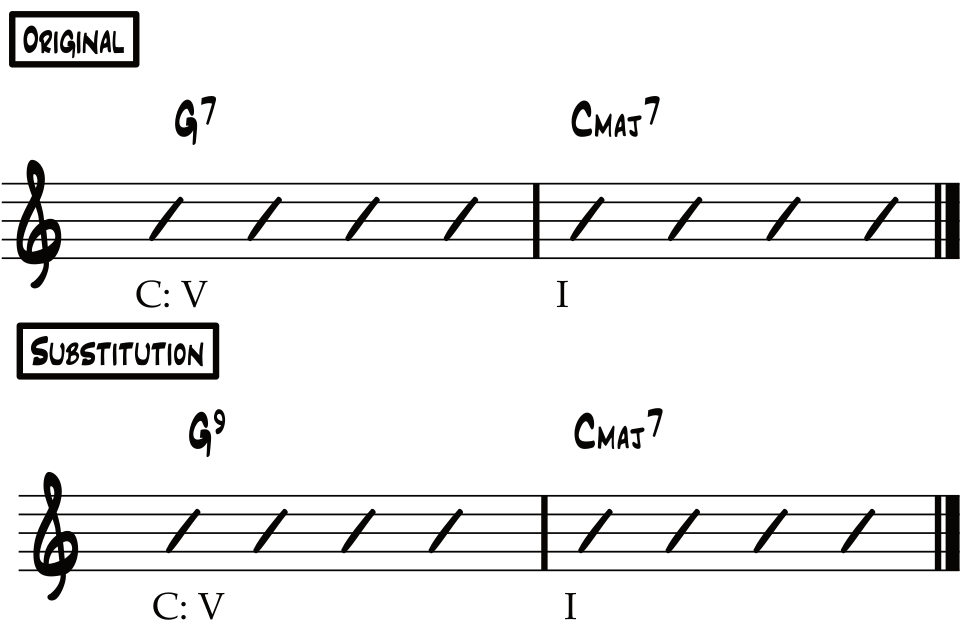
Expansion
Original chord remains plus the substitute in the same time frame.
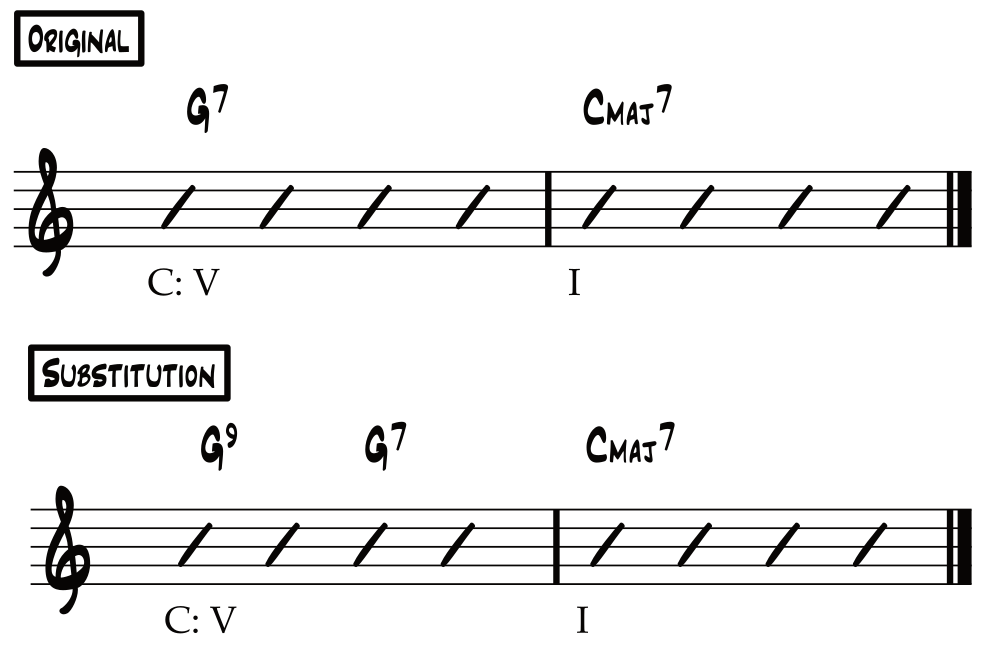
Superimposed
Various upper partials (9, 11, 13). No new harmonic analysis is needed, same scale choices apply.
Superimposed substitutions are direct substitutions, either replacing or expanding the existing chord.
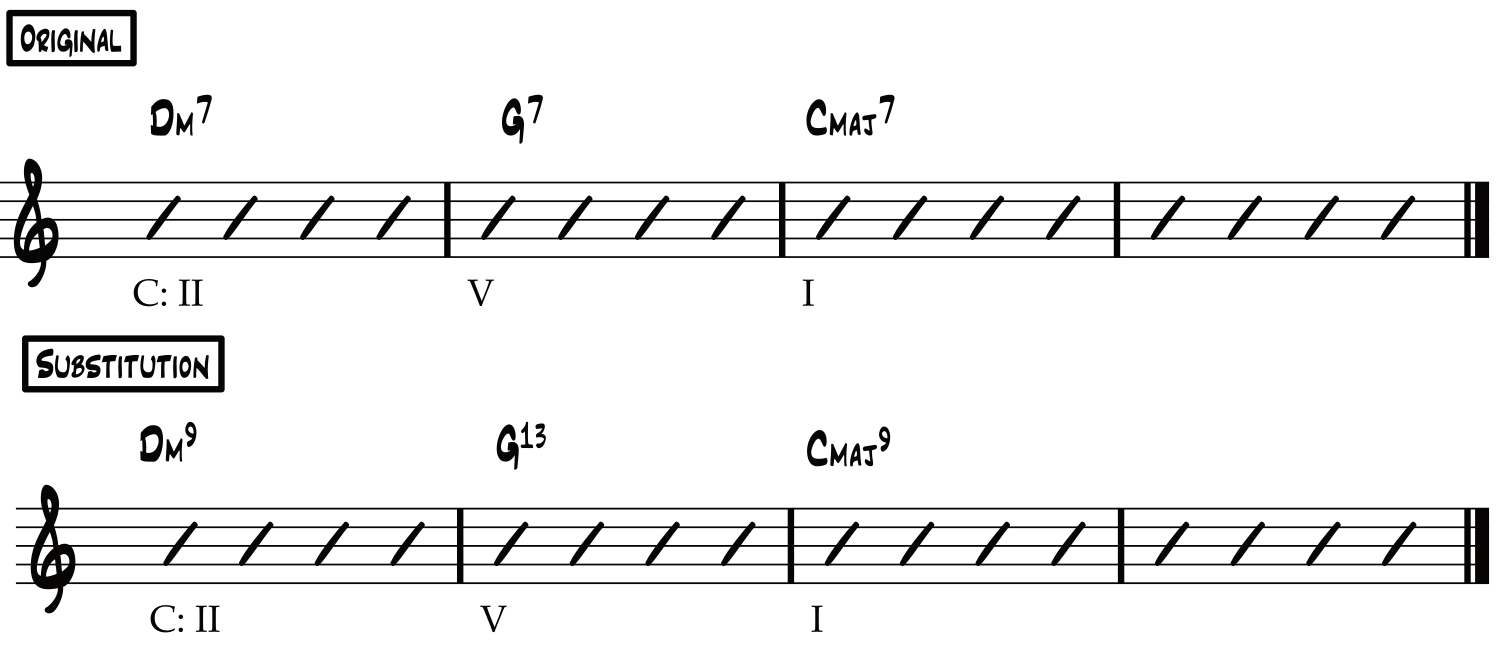
Non-superimposable
Alterations (♯4, ♭5, ♯5, ♭9, ♯9, ♯11, ♭13). No new harmonic analysis is needed, possible new scale choices apply.
Non-superimposed substitutions are direct substitutions, either replacing or expanding the existing chord.
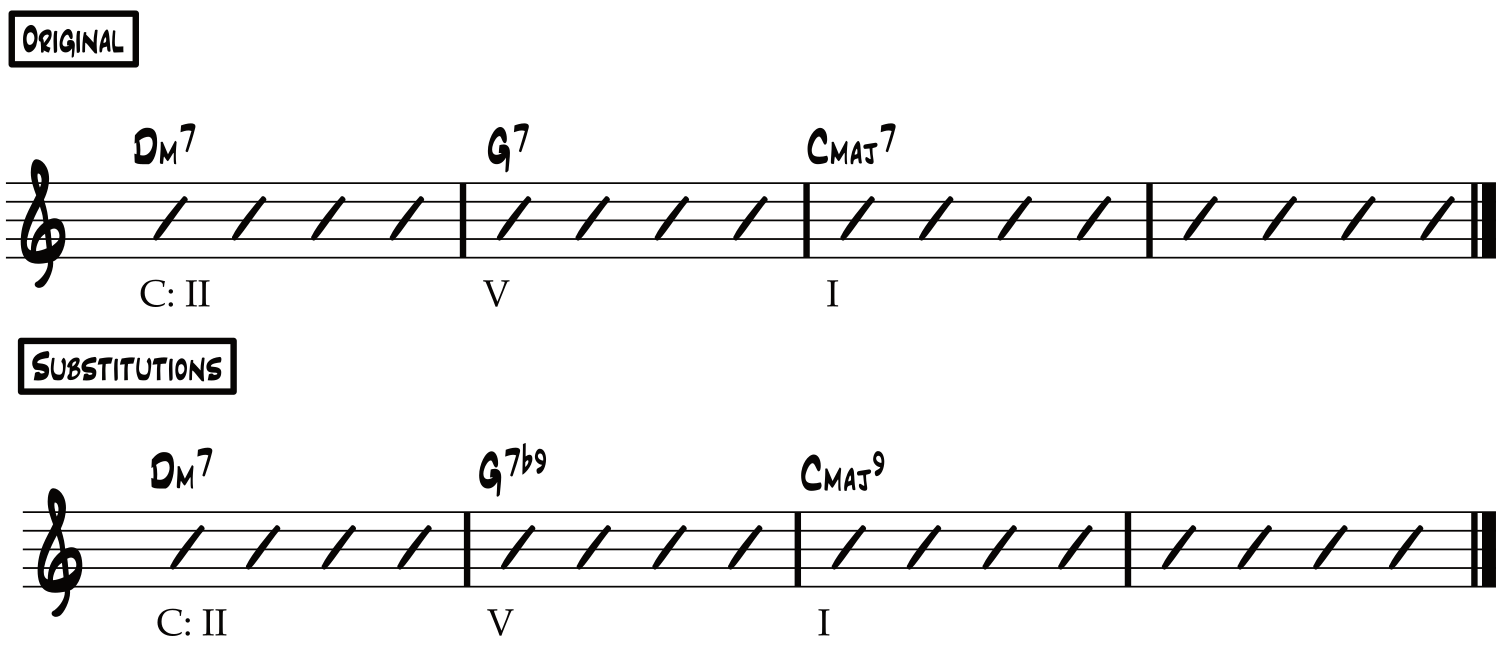
Note Substitution
6 for maj7, m6 for m7, mL7* for m7. No new analysis is needed, same scales choices apply.
Note substitutions are direct substitutions, either replacing or expanding the existing chord.
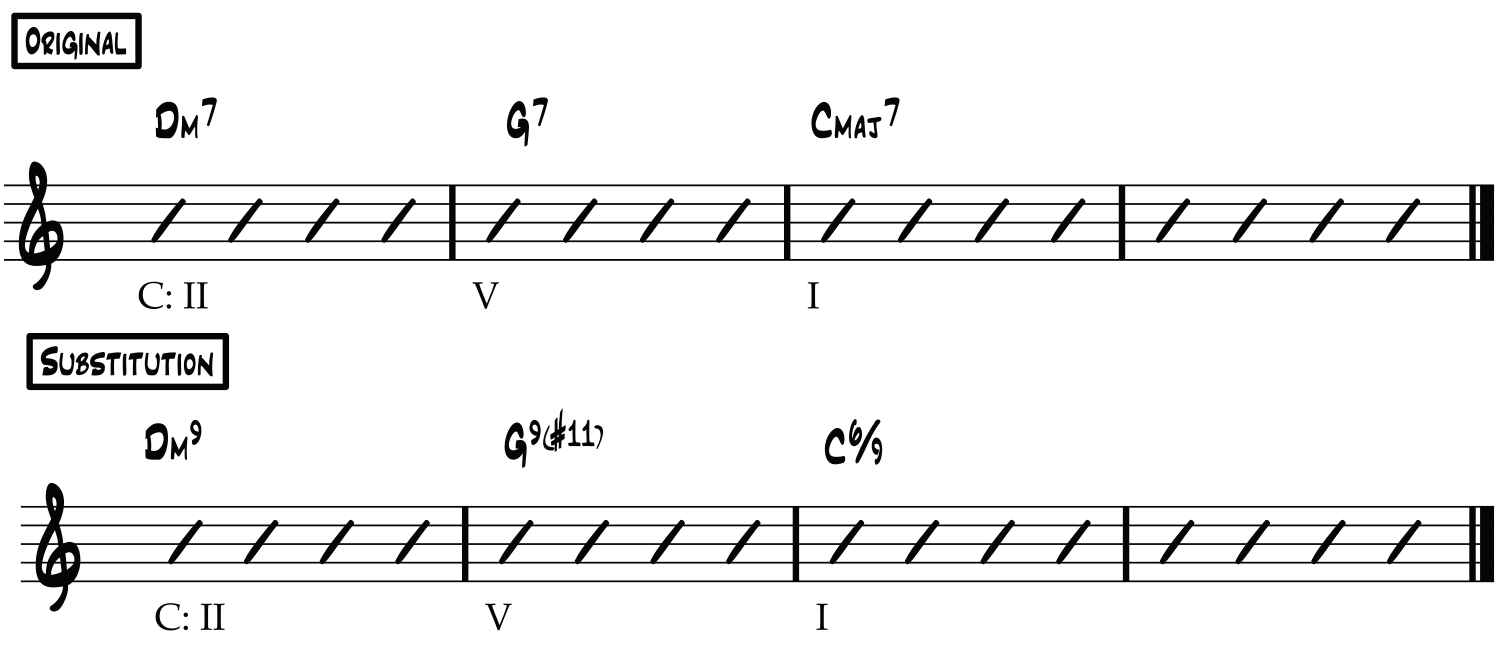
* minMaj7 — The L
is a notational shortcut for a Large or Major Seventh.
Chord Inversions
No new harmonic analysis is needed, same scale choices apply.
Linking Chords
Connective chords, A NEW harmonic analysis IS needed, resulting in new scale choices.
Re-Harmonization
New Chords —A NEW harmonic analysis IS needed, resulting in new scale choices.
Related Lessons, Videos, Lesson Series, Songs, Books & Reference Charts, Resources & Assets, Workshops are below.
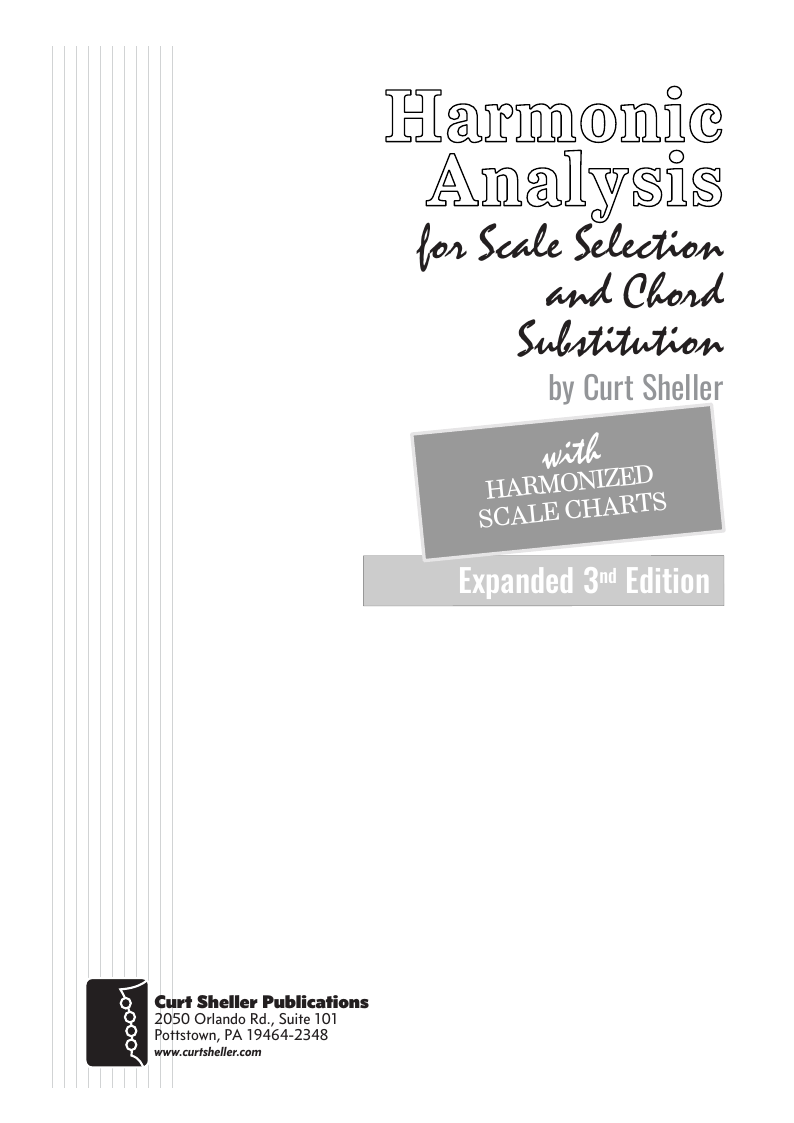
Harmonic Analysis ( HA ) is the process used to determine the harmonic function of chords within a chord progression. A chord progression is defined as a sequence of chords, each chord has a root and has a particular chord type. The relationship of a chord's root to a scale determines its function within that scale's tonality. Once a chord's function is identified, scale selections along with chord and scale substitutions can be made. This process is called Root Movement Analysis ( RMA ). This series of lessons are extracted from my book for use with individual private and on-line students. Each lesson directly corresponds the chapters in my book Harmonic Analysis for Scale Selection and Chord Substitution by Curt Sheller (me).

Cras mattis consectetur purus sit amet fermentum. Vestibulum id ligula porta felis euismod semper. Fusce dapibus, tellus ac cursus commodo, tortor mauris condimentum nibh, ut fermentum massa justo sit amet risus. Vestibulum id ligula porta felis euismod semper. Integer posuere erat a ante venenatis dapibus posuere velit aliquet.

Harmonic Analysis is the understanding of the functional sequence of chords. It is the process used to analyze the harmonic structure of a progression, song or composition. This analysis is then used to make scale selections for improvisation and chord substitution.


return in your investment)—it is this— learning the
f*ckingnotes of your OWN instrument. Sorry for the tough talks—but it is sooooo true!


Learn to read single note melodies in the first/open position is a lot easier than you might think. Book: Ukulele – Reading Music Series – Primer

An organized collection of daily practice and reference material for the contemporary ukulele player for developing the vocabulary and knowledge necessary for single note playing. Book: Daily Practice Material for the Contemporary Ukulele
Checkout the Books & Reference Charts for additional Handy, Dandy Reference Charts.

Ukulele Fingerboard Chart for C Tuning, Low or High G – G C E A

Ukulele Fingerboard Chart for G Tuning, Low or High A – D G B E

A handy reference chart of all 15 major and relative minor key signatures. US Letter 8.5 x 11 sized (ANSI-A) , A4



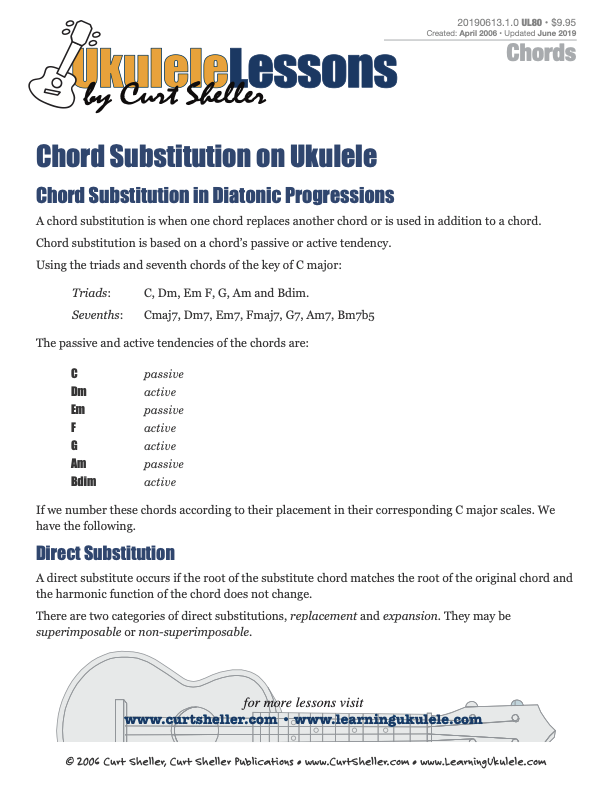
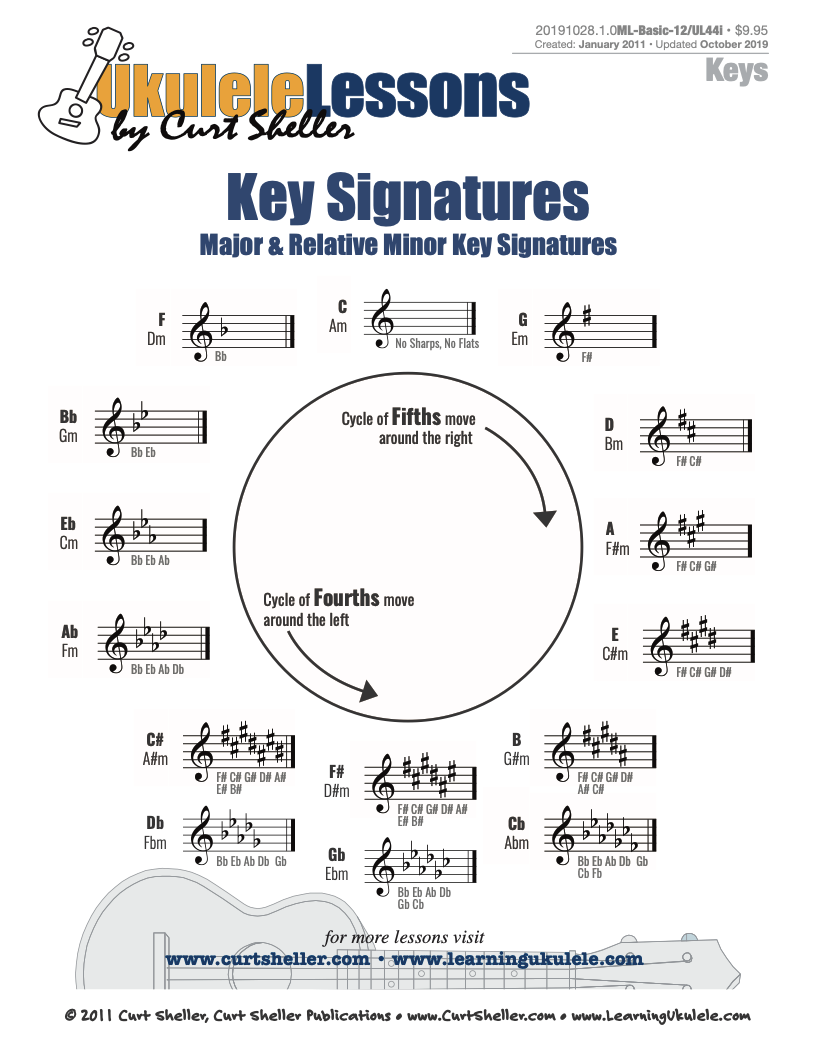

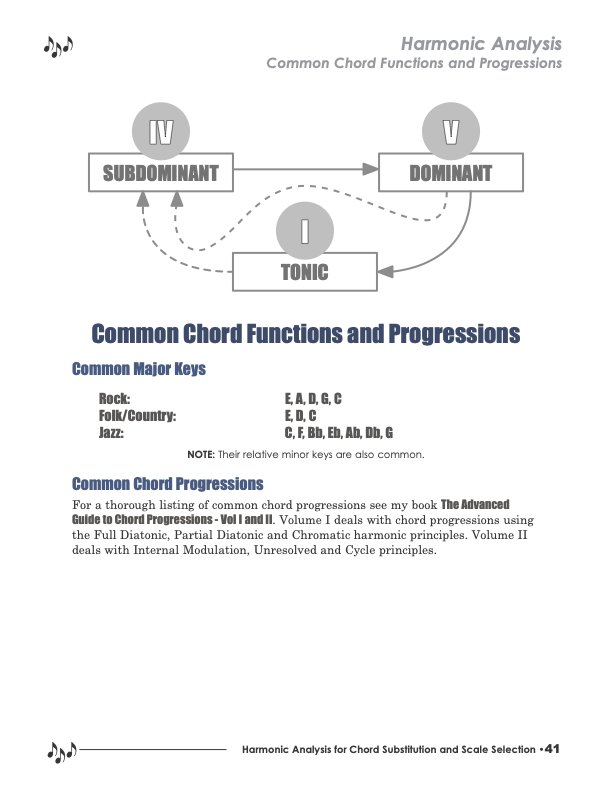
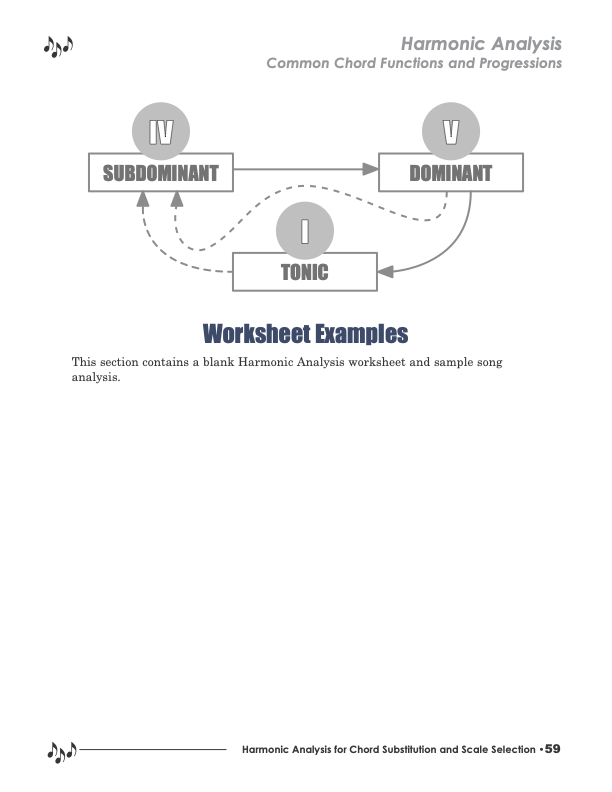
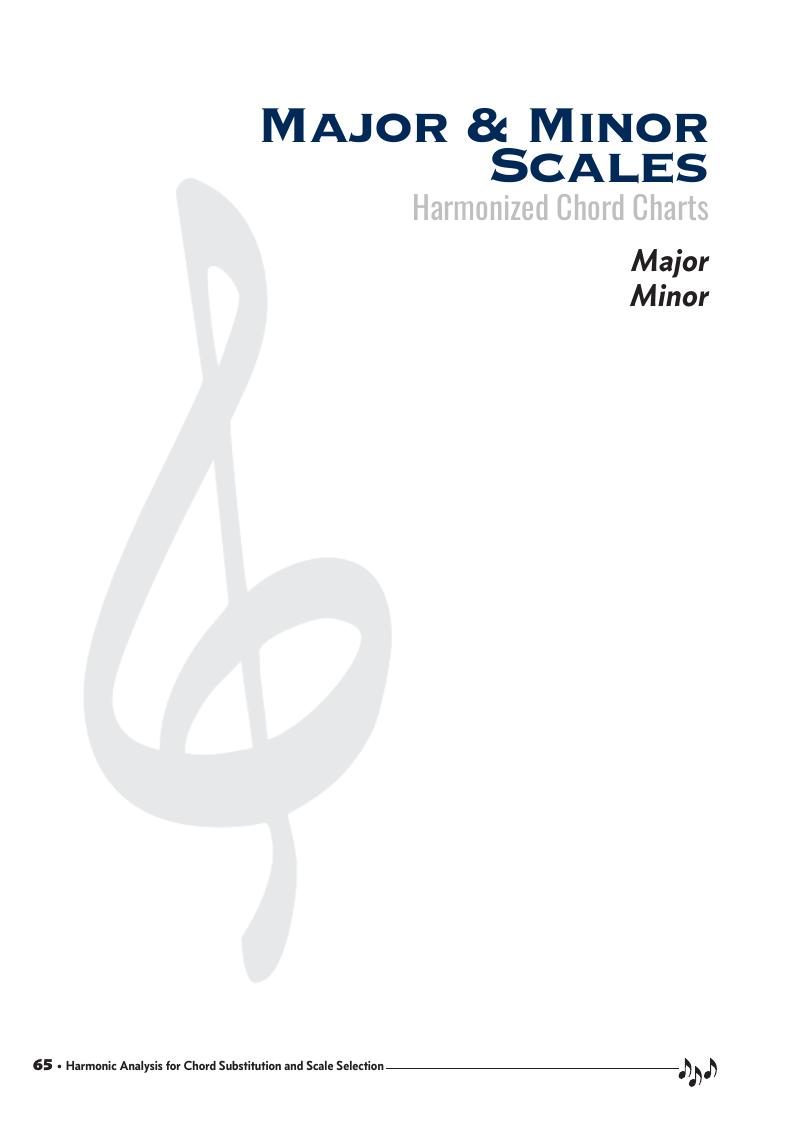



.jpg)